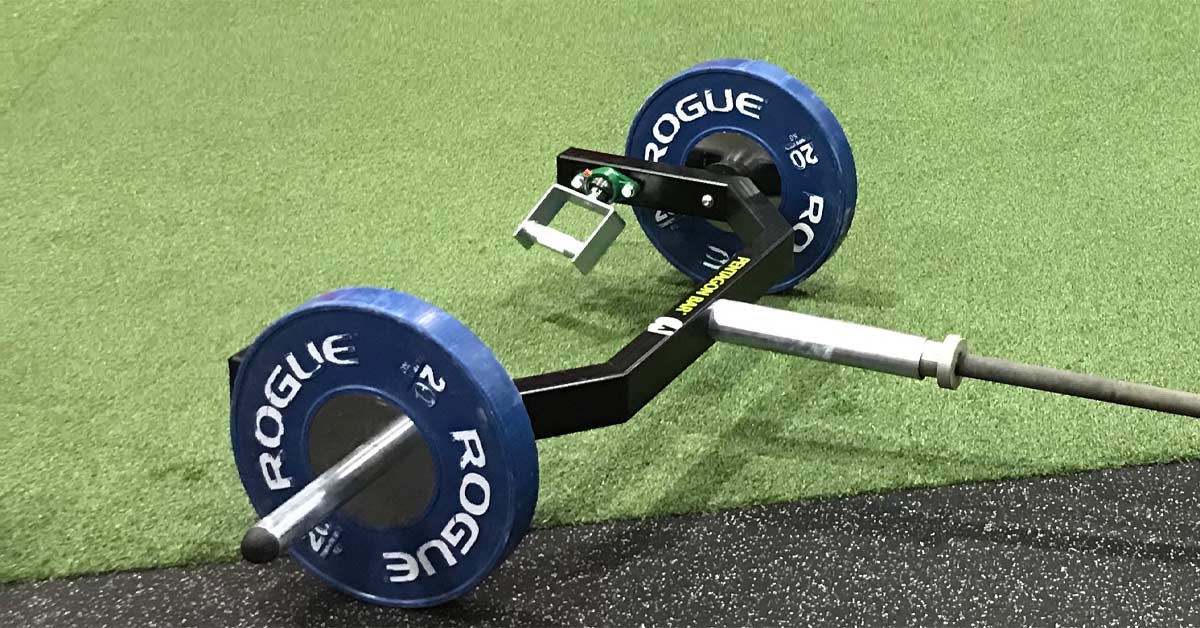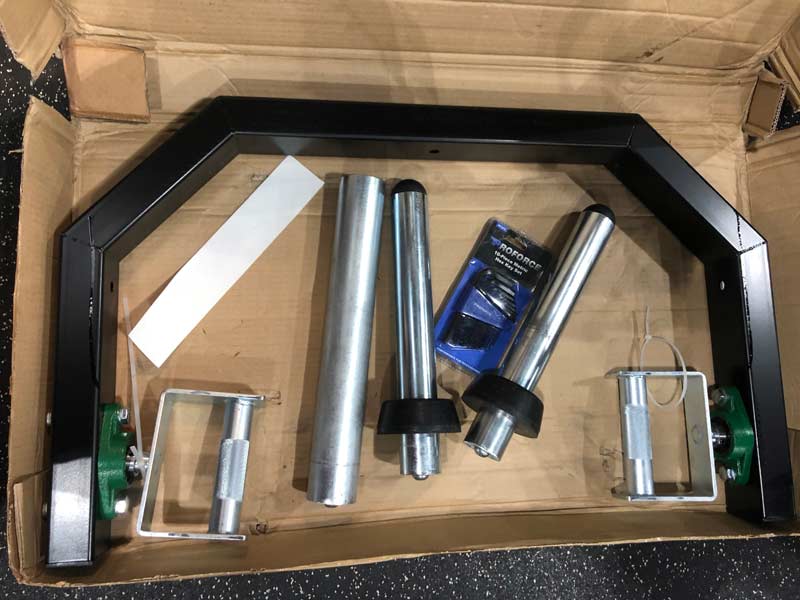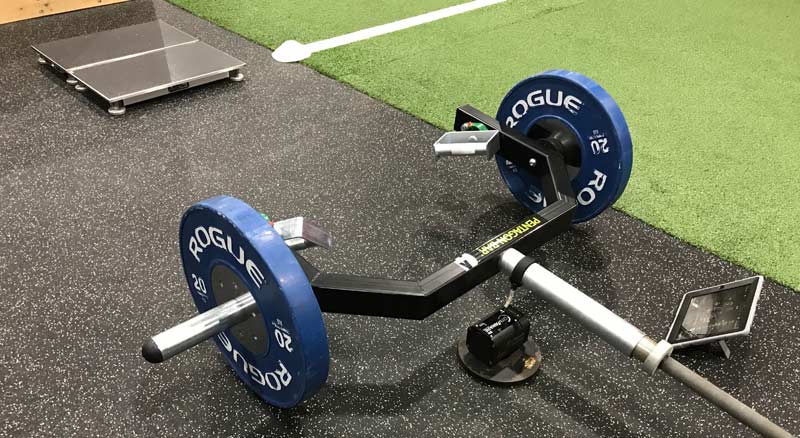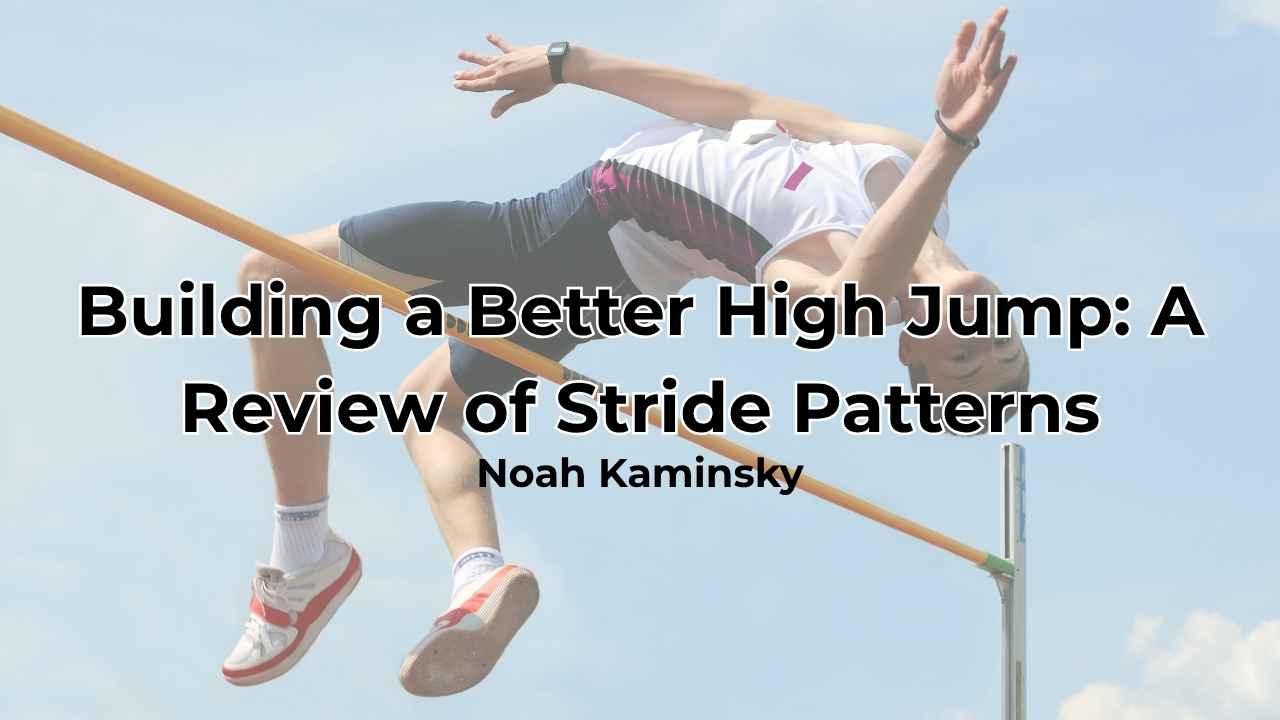[mashshare]
I rarely get excited about equipment, as most of the stuff that comes out is just not worth even trying. Once a month, however, I do get enticed by a video clip or another coach recommending me to upgrade something, and the Pentagon Bar is one of these things. Based on my testing, this barbell from A-Unit makes the trap bar look limited, and while I have never liked the landmine very much, I am now committed to new options.
The Pentagon Bar is one of those tools that can make your gym experience better. After a few weeks, the piece of equipment made a difference with a few selected athletes learning mechanics and loading differently.
What Is the Pentagon Bar?
The Pentagon Bar resembles a wide tuning fork, and it uses a conventional barbell to attach to a landmine, ground, or fixed support. You will notice that the bar has a set of swivel handles and a barbell sleeve on the outside. On the right and left sides, two large plate pegs extend for loading weights. Those features seem rather basic at first glance, but if you know how hard it is to innovate, you will be shocked that this attachment bar wasn’t a staple for pressing earlier.
The #PentagonBar is one of those specialized items that makes a difference in the gym, says @spikesonly. Share on XSure, any program can survive without specialized equipment, as technically a barbell, a medicine ball, and a nice grass surface should be all that you need. Fortunately, the gym is not a world of restrictions, and the Pentagon Bar is one of those specialized items that makes a difference.

I have seen the Pentagon Bar before, but it wasn’t until Sean Maloney posted jerks with the equipment that I realized its potential. We contacted A-Unit and immediately started brainstorming which exercises it could improve, and where it would be best used in training. It’s easy to come up with more exercises or combinations; it’s harder to cut out what we like and just use what we need.
I love conventional training and enjoy the process of training. Not every athlete enjoys training or even sports, and after their careers are over some don’t exercise at all. It’s important to know that our goal is to make the process better, not just the athletes.
A Review of the Physics Behind the Equipment
The most obvious part of the Pentagon Bar is that it’s really two bars, and this is where a little reminder of physics can help you understand the differences between a conventional free barbell and a hybrid option. While the Pentagon Bar is not a weight machine, the simple lever technically makes it machine-like. To me, it’s a free weight option but with just enough stability to make it great for those who want motion control. The fixed point of the connected barbell allows for a radial swing motion, and that arc is important when deciding on exercise variations.
The #PentagonBar is a free weight option with enough stability for those who want motion control, says @spikesonly. Share on XCoaches will have to decide on ground-based points of contact or higher points, such as eye-level placement of the landmine or support device. The lower to the ground and harder the exercise performed—such as overhead motions with floor-based landmine placements—the more horizontal the bar path will be. Deadlifting or leg exercises will be more vertical in loading as the bar is held lower to the ground. I looked at the research and discovered little information on the landmine, so I did my own investigation to find five exercises that really made a difference in training.

One last benefit I like about the Pentagon Bar is that it’s fine for VBT work, as a GymAware or other system can integrate with it nicely. While displacement is not single vector, the exercises don’t really change the data a lot if the equipment is set up properly. Also, you should think about using jerk blocks or boxes if you have a tether-based VBT system. One of the limitations with linear encoders is that placement of the hardware is sometimes difficult.
Reverse Lunges and Split Squats
The first exercise evaluated is actually a two-for-one example of what makes the Pentagon Bar unique. Reverse lunges are great because you can load them up nicely, and split squats are awesome because they are easy to set up. Usually done with kettlebells, barbells, or dumbbells, reverse lunges have pros and cons with various equipment options.
To challenge the body, the risk of not being able to complete a rep must be real, but also safe, says @spikesonly. Share on XWalking lunges with a barbell or dumbbell are perfectly safe, but the loads must be low enough that failure isn’t likely. If you are going to challenge the body, the risk of not being able to complete a rep must be real, but it must also be safe. A suitcase-style lifting position allows for heavy loading while providing the necessary safety. Split squats respond better, as the landmine or other attachment enables an athlete to be more secure while offering a free motion that is natural.
Video 1. Reverse lunges are great with the Pentagon Bar, and you can go heavy without the fear of losing your grip and having a dumbbell bounce the wrong way. Reverse lunges are still assistance exercises to me, but now they are more potent because they are more aggressive.
The only drawback to handle-based options is that grip tends to be a factor, especially with athletes who are less developed in the weight room. I have mixed feelings about wraps, as handcuffing an athlete to a bar is sometimes problematic, but I do like the way wraps can enhance exercises. Since heavy lifts should be low repetitions, if an athlete is deadlifting with a hex bar heavy, they can split squat or lunge just fine with the Pentagon Bar. Coaches can customize the grip with “fat padding” or other grip modifiers if they want, but overall the grip argument is just brought up to ensure I do not sound biased.
Video 2. Split squats, whether elevated or grounded, are great options for athletes who need overload and safe movement. I don’t know if I will use conventional split squats much more in the future, as the exercise is perfect with the Pentagon Bar.
I have seen some video of heavy and shallow step-ups with the Pentagon Bar and feel that they are fine for those who know what they are doing. Additionally, if set up properly, you can manipulate the eccentric portion of the lift slightly by using the right landmine attachment.
Overall, I believe the reverse lunge or split squat option is the most logical exercise choice, and I wonder how the popularity of the hand-supported options will fare as the Pentagon Bar theoretically replaces a safety squat bar and gripping the rack. With the value of the safety squat bar overall, it’s likely coaches will have to budget wisely on other purchases as both bars are great for training. I give the split squat 4 stars out of 5 because it’s good for short ranges of motion, and the lunge receives 3.5 stars for its bar path slightly altering the ergonomics of the movement.
Standing Shoulder Press
Alan Bishop posted a tweet of a few athletes putting on some mass with Z-presses, and they performed them with benches in a sitting position. I know the functional crowd will question the fact the foot doesn’t hit the ground, but overload that local is sometimes needed to make gains quickly. Plenty of other exercises and training are being done on the feet, so nobody should worry about losing coordination or similar fears.
A year ago, I recommended pressing with the Quantum in a deep squat position, as it’s a perfect exercise for many athletes. Still, sometimes a strict—or dare I say, “bodybuilder”—movement is useful. I am not a fan of most seated exercises, but this is perhaps one of three I find indispensable for body development. The problem is that getting the bar above the head in a fixed landmine requires a little extra work, so I recommend split stance or deeper squat pressing if getting to a bench is awkward in your situation.
Video 3. Turn any Pentagon Bar into a military press machine in seconds. While I prefer free weights in training most of the time, a little stability makes for a great way to overload the exercise.
The most obvious reason many coaches gravitate to dumbbells is that they allow for more motion to the shoulder than barbells. Because the head gets in the way, many athletes don’t like jerking (an exercise I will cover at the end of this article). Shoulder pressing is not the same as jerking, but for those who have good range of motion and want an aggressive loading motion, seated pressing is a great way to develop the entire upper back and shoulder complex.
I like jerk boxes and blocks with an elevated placement of the landmine lever, but I have seen plenty of great athletes simply muscle snatch or muscle clean the load since it’s not extreme. A great bench press doesn’t need a lot of shoulder work, but I would rather have a good bench and good shoulder press than a great bench with the absence of pressing vertical.
Don’t go crazy with shoulder pressing; do it right & ensure it’s heavy enough to challenge athletes, says @spikesonly. Share on XFrankly, I think of all the screens I see, those that perform pressing vertically as a diagnostic tool seem to reveal more information than anything else outside of an overhead squat. You don’t have to go crazy with shoulder pressing; you just need to do it right and make sure it’s heavy enough to challenge athletes, so don’t just stay in the high rep range. It’s OK to dip below 5 reps with upper body pressing, just make sure it’s precisely loaded and progressed slowly and surely. I would give this a 5-star rating if the set-up to initiate the exercise was less demanding, so for now it’s 4.75 stars.
Neutral Grip Push Pressing
Push presses are not transitions or progressions from shoulder presses and jerks, but do belong in the same conversation. I like barbell pressing with the handles at a small angle because the exercise is slightly more shoulder-friendly. I don’t like using slang to describe what we don’t know, but some athletes do have an “issue” with overhead pressing for one reason or another. Clinically, it’s easy to jump to conclusions from reported symptoms and responses to orthopedic examinations of a problem, but even a professional evaluation alone is far from perfect. In the meantime, I don’t fight battles that seem to have no winner—I just focus on what is comfortable for the athlete and makes them better.
Video 4. Reaching with full extension should be a staple in sports training, as it’s a way to create a well-rounded athlete, rather than a more specifically trained one that seems to break down more. It will take time, but I believe that a globally strong athlete is superior to one that just does “prevention” training.
A good push press uses the upper body to finish the movement and generates a good amount of force from the legs to initiate the exercise. Push pressing and jerking are not the same with temporal coordination and loading. Technically, a soccer player should jerk more than they push press, as they don’t have a big need for upper body strength.
I know what you are thinking about the likelihood of soccer push pressing, but if you are going to press dumbbells, why not at least add a little body English to the equation and stress the system slightly with a barbell option? Soccer is infamous for injury reduction exercise piece-mealing, and I have experienced doing combination methods with better results than doing one method only. You don’t need to impress people on Instagram by pressing body weight numbers, but if figure skaters are putting up triple digits of pounds while skating on ice with a partner, pressing triple digits with sure footing shouldn’t be scary.
Neutral grip push presses with the Pentagon Bar are a nice alternative and perfect for higher reps, says @spikesonly. Share on XA few strength coaches recommended that I press with my athletes, whether pushing or strictly in a standing or staggered position. My response was that we did it from time to time for balancing the body, but they were adamant that I needed to do more of it. I asked why and they were crystal clear: It seems that flexion or other exercises that are obsessed with stabilization or anti-rotation are popular, but stacking the joints vertically is underrated.
Being a fan of Pallof presses, I was hesitant to reduce my isometric abilities. However, I was relieved that vertical pressing was recommended as a progression before push presses, and after that as a way to improve a stubborn athlete. Over the last few years, our athletes felt very little groin and abdominal discomfort in the pre-season—the old-school coaches were again correct that general exercises have a way to build real durability that can be seen and felt. This exercise is a 4.5-star movement, as it’s a nice alternative when needed and perfect for higher rep pressing, it but does have a few quirks.
Bent-Over Barbell Rows
Coaches like horizontal rows for good reason; they are part of balancing the body and are perfect for adding some mass to larger athletes who need to bulk up. Shane Davenport recommended them because they groove nicely and are great for teaching body positioning. The exercise got me out of my comfort zone a bit, as I always refer to my own training, and if I don’t use it I am cautious about programming it.
Video 5. The key to the bent-over barbell row is that the handles create a better feel than a straight bar. In addition to the comfortable motion on the shoulders, the bar teaches good body position.
This exercise is the most straightforward of all the movements, so I will not spend much time breaking it down. Some coaches will worry about back fatigue, but if you avoid a potential challenge, you build a body on a foundation of clay. I recommend that you place the exercise in the early off-season.
If you avoid a potential challenge, you build a body on a foundation of clay, says @spikesonly. Share on XThe right volume is traditional reps of 5-8, with a fast rhythm so the work is done without spending all day bent over. The key is the angle of the hip and shoulders, as you need enough incline to spare the back a bit, but not so much that it resembles a shrug. Again, the exercise is part of a pulling program, and you should use it to help balance the pushing and pressing an athlete does in training. I give this exercise 4 stars out of 5 because it’s good to have, but not a game changer.
Modified Power Jerks
The most common false argument from those against weightlifting exercises like the clean or snatch is that athletes don’t compete in a sport that uses them, so training with those exercises is a poor use of time. This is true, an athlete can compete in weightlifting if they are proficient enough, but removing parts of the lift or avoiding the lift entirely is not a sign of expertise—it’s just a preference that is acceptable either way. I would never start cleaning with Roger Federer, but avoiding simpler versions of exercises with other field sports is lazy.
A direct transfer of training can come from a variety of exercises, but the key to training is not just the science—it’s the ability to fulfill the human experience of enjoying the process. Jerks are often scrapped because they are more technical, but modifying them is a great first step. A few reps are all an athlete needs to perform to get the hang of a jerk, especially a modified version with the Pentagon Bar.
Video 6. I am not looking for great jerk loads; I just want a sufficient overload that doesn’t waste time and can scaffold athletes to something more progressive. Jerks are not difficult to learn with the right coaching, but a few tweaks with the best tools does help. The bar velocity and snap of the lift is faster than the video, but we wanted show clearly how the legs are driving the force through.
There are two factors that make jerking with the Pentagon Bar interesting. The first is obvious: the ability to press overhead without the head in the way. I won’t say that it’s better or worse to use the Pentagon Bar early in learning the lifts as a whole, but it’s far too early to decide if learning with a different bar is a bad idea for an athlete.
Secondly (and conversely), teaching an athlete with the Pentagon Bar could be the ultimate progression, but I would rather just stick to something neutral. It’s a great alternative to conventional jerking for some athletes. For me, Sean Maloney using the barbell represented the essence of a good jerk: the ability to drop and shoot the bar up from the leg drive.
Using force analysis and barbell tracking technology confirmed what anyone with a sound sense of logic would deduce: You need to be strong and fast with jerk-style motions; otherwise, it’s busy work. The most common mistake is thinking that going light and fast is going to make a difference in leg power, or that strong and slow is possible when the upper body contribution is more than just finishing the leg drive. Modifying the exercise is a little easier to learn, and adds a less-demanding plane of motion. I give this exercise 4 out of 5 stars, as I like the unloading to the shoulders but prefer pressing with it.
Don’t use the Pentagon jerk as a lazy progression or regression—it’s a different exercise, says @spikesonly. Share on XAn important point needs to be brought up. Don’t use the Pentagon jerk as a lazy progression or regression. It’s a different exercise and the loads and technique make it so it’s not an interchangeable movement. The balance you learn by having a bar above your head isn’t really the same with a traditional bar and the Pentagon Bar. Unlike the jerk with an Olympic bar, you can learn to do more reps, as the exercise is more of a speed option than using a true clean and jerk load.
Add the Pentagon Bar to Your Training Armory
I recommend getting the Pentagon Bar and having it on hand for special situations, as it’s a versatile piece that has value but may not be for you. It’s a practical way to make great exercises better, replace some conventional exercises, and add new exercises that were simply not ready for prime time. I know other exercises are growing in popularity, such as Romanian deadlifts, and even isometric pulling is possible, but the above five exercises are a great starting point to think about.
After getting a few tweaks, I hope the Pentagon Bar is in every weight room sometime in the future, says @spikesonly. Share on XDon’t just buy the Pentagon Bar because it’s trending and popular—use it to actually make your program better. You can chase your tail to get change without improvement or you can choose to evolve, and that’s why the Pentagon Bar is a keeper. I prefer straight bars and love the direction the Pentagon Bar is going. Hopefully, after a few tweaks, this can be in every weight room sometime down the road.
Since you’re here…
…we have a small favor to ask. More people are reading SimpliFaster than ever, and each week we bring you compelling content from coaches, sport scientists, and physiotherapists who are devoted to building better athletes. Please take a moment to share the articles on social media, engage the authors with questions and comments below, and link to articles when appropriate if you have a blog or participate on forums of related topics. — SF
[mashshare]




